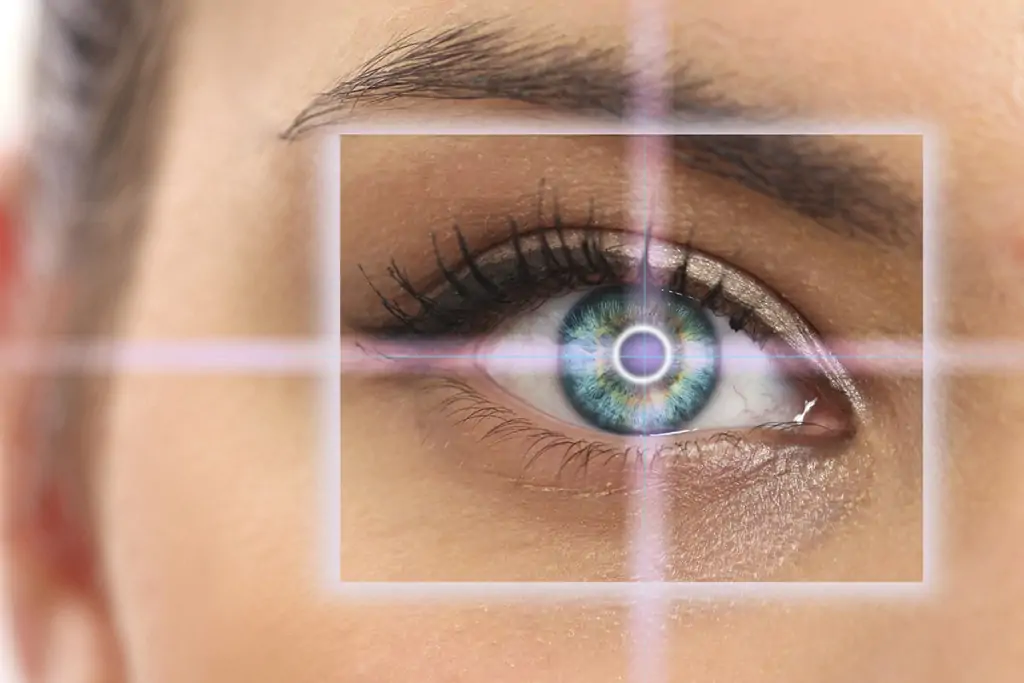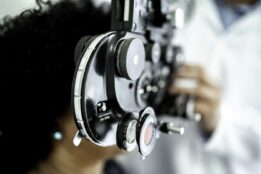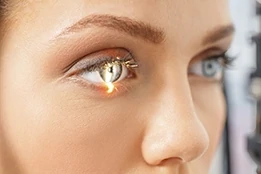LASIK Advertisements: Separating Fact from Fiction

For people thinking about vision correction surgery such as LASIK, information is everywhere – the most prevalent being in the form of advertisements. With so many ads, it can be difficult to sift through the hype to get to the facts that people find valuable when making a decision about vision correction surgery. Most LASIK advertisements are responsible, balanced and informative, which is appropriate for a medical procedure. And importantly, almost all LASIK surgeons use some form of advertising – including, but not limited to, the most highly qualified and skilled. But we’ve all seen or heard the ads that don’t seem believable.
Who monitors LASIK advertising to make sure it is accurate?
Fortunately, there are some protections in place for consumers. Like all advertising, LASIK advertising is monitored by two government organizations: the U.S. Food and Drug Administration (FDA) and the Federal Trade Commission (FTC). The FDA regulates medical devices such as those used in laser eye surgery. It also monitors LASIK marketing to make sure it contains accurate information about the procedure. The FTC prohibits the distribution of misleading and deceptive ads to consumers. States also have consumer protection laws in place.
Still, if you’re considering LASIK, American Refractive Surgery Council recommends you do not select an eye surgeon based solely on their ads or marketing materials. They can be useful as a form of patient education, although you should always be suspicious about an ad that sells too hard, doesn’t disclose risks, or focuses on a low cost of LASIK that makes you think “this sounds too good to be true.” Trust your gut: if it sounds too good to be true, it probably is.
What to know about LASIK advertising?
LASIK advertising can be a useful starting point in your LASIK journey – but it’s just a starting point. These are additional and important steps in your journey:
- Be fully informed
- Make sure you’re a good candidate for LASIK
- Know your LASIK Surgeon
- Know the technology and how LASIK works
1. Be fully informed about the LASIK procedure.
Read about LASIK on websites like ours. Talk to friends and family members who’ve had LASIK. Talk to your primary care physician, ophthalmologist, or optometrist about whether LASIK could be right for you.
2. Make sure you’re a good candidate for LASIK.
Millions of people can benefit from LASIK, but it’s not for everyone. Approximately 15 – 20 percent of the people who are interested in LASIK turn out to be ineligible because they have thin corneas, unstable prescriptions, or other medical issues. The way to make sure you’re a good candidate for the LASIK procedure is to have a thorough evaluation of your vision and eye health. This process can take two to three hours at a reputable LASIK practice.
3. Know your LASIK surgeon.
Make sure you’re fully familiar (and comfortable) with his or her background and qualifications. Board certification by the American Board of Ophthalmology is a minimum qualification. Highly qualified surgeons have more credentials, have completed advanced training, and participate in clinical research. When choosing your LASIK surgeon pay attention to the details. Make sure your surgeon has lots of experience – at least 1,000 LASIK procedures – and is careful to screen out people who aren’t good candidates for the surgery. Find out more about refractive surgeons here.
4. Know the technology and how LASIK works.
While LASIK has been available for nearly two decades, significant advances in technology and techniques are available today. Recent advances include next-generation excimer lasers, extremely precise femtosecond laser technology, wavefront technology, and advanced diagnostic equipment. These aren’t available in every practice and may not be offered by ones that offer deep discounts or market themselves most aggressively. Bottom line it is important to understand how LASIK works and the latest advancements in LASIK technology to help you make an educated decision.
LASIK Advertising may spark your interest, that is was it is designed to do. However, choosing to have LASIK is an important decision and shouldn’t be based upon just what you learn from an ad. Questions like how long LASIK lasts, what is the LASIK complication rate and side effects, and is LASIK safe are just a few common questions that individuals have when considering LASIK. Being informed and up to date is important. You can trust the American Refractive Surgery Council to keep you up to date with the most accurate information on vision correction procedures. Articles are reviewed by our Editorial Advisory Board and given the Refractive Surgery Council Verified Seal which represents our promise that every word we share represents the highest standards in the field of refractive surgery.




